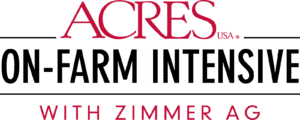Dear farmer or agribusiness person,
So far so good this season at least for us in our area. Having recently been dry and now getting rain, this is an ideal spring into summer for me. Plant in dust and in the fall the bins will bust. Wet springs and dry summers just don’t work! But you have no control right… I’m not so sure about that. You can build soil resilience, improve soil biology, and change soil structure. You can provide plant diversity and mineral balance. You can use better quality fertilizers (that’s where Midwestern BioAg comes in), and make sure every year you supply soluble calcium, sulfur, and boron. Providing carbon with your fertilizers and adding compost is also a good idea. Add biology or use biology stimulants to feed the biology and keep living roots in the soil. These are all good practices.
Using all, or some, of these practices, will take you a long way in dealing with our extreme weather. Adding Rye to your rotation can certainly do that too. What else can you plant after corn/soybean harvest in the upper Midwest? When adding a practice like rye, you have to learn how to manage it. Change always requires knowledge if you want success.
I’m involved with a group called Rye Revival – it’s the plant that’s here to save the planet. It can be used for feed. It has some real benefits for livestock production and health when adding 15% to their grain diet. Food for us is another great use for rye. At 15% of our grain diets, it not only adds flavor but has many of the same health benefits. Cover crops are another great use for rye. It’s easy to grow, has massive root systems, provides living roots in the soil over winter, sequesters carbon and greatly improves soil structure. Rye also works great for the distilleries as they are making better, healthier products. The trouble is there aren’t enough markets yet, it’s not insurable and there is no profit in growing it to harvest. I just heard a new crop in the Dakotas was selling for $8.50 a bushel conventional.
Our farm is organic and its one-year rye with clover blend underseeded (frost seeding clovers early spring) and one-year corn, we are lucky to get 50 bushels of rye. We are limited on nitrogen following corn and yet our rye is over 5 feet tall and lodging this year. We want the clover more than the rye so we plant thin so our soils start building organic matter and nitrogen from all the clover but still can’t stop the rye from growing and lodging. We sure could use something to keep it shorter, planting late like the end of November and thinner does help but doesn’t give you 100 bushels of rye to harvest.
If you grow rye (what else can you plant in late November?): harvest the grain flail mow the straw and early clover growth, let the clover grow again, mow early September, spread manure/compost if available, deep rip if needed, let it go winter dormant, let it regrow in the spring and when it’s about a foot tall shallow incorporate and plant corn. That’s three clover crops from one planting, plus all the straw residues the soils will change, we have measured 300 units of nitrogen just from the above-ground clover. You can also graze the fall clover growth.

One-year corn and one-year rye cover crops also allow you to take on more acres as the rye and corn don’t compete for work and spread-out risk. My son, Nick, and another worker are now farming 1600 acres and believe they can handle 2000. We want to show you our system and the economics of farming this way. So, on Wednesday, August 24th we are hosting a field day with the OGrain group from UW. They would like you to register as they are providing lunch.
Field Day | Wednesday, August 24th
9:30 am to 3:00 pm
6679 State Hwy 23, Spring Green, WI
Register here.
View more Field Days dates and information here.
Stations will be set up for small group learning. The topics consist of:
- UW Research
- Designer Compost/Midwestern BioAg carbon-based fertilizers
- Testing both the soil and the plant with guest, David Knaus, of Apical Labs in Oregon
- The Savanna Institute demonstrating permanent agriculture (they have purchased four farms in our area, and we have elderberries and blueberries growing on our farm)
- Cover crops and growing corn and growing soils – the cost and profits of our farming system
- Rye Revival and all its future potential
If you want more training and in-depth learning on biological farming on Monday and Tuesday, August 22-23, join us for this intensive training hosted by ACRES USA. The focus will be on utilizing testing to make management decisions along with our in-field studies.
Learn more about the ACRES On-Farm Intensive here.
I hope you can attend one or both events. Have a great summer.
GFZ



